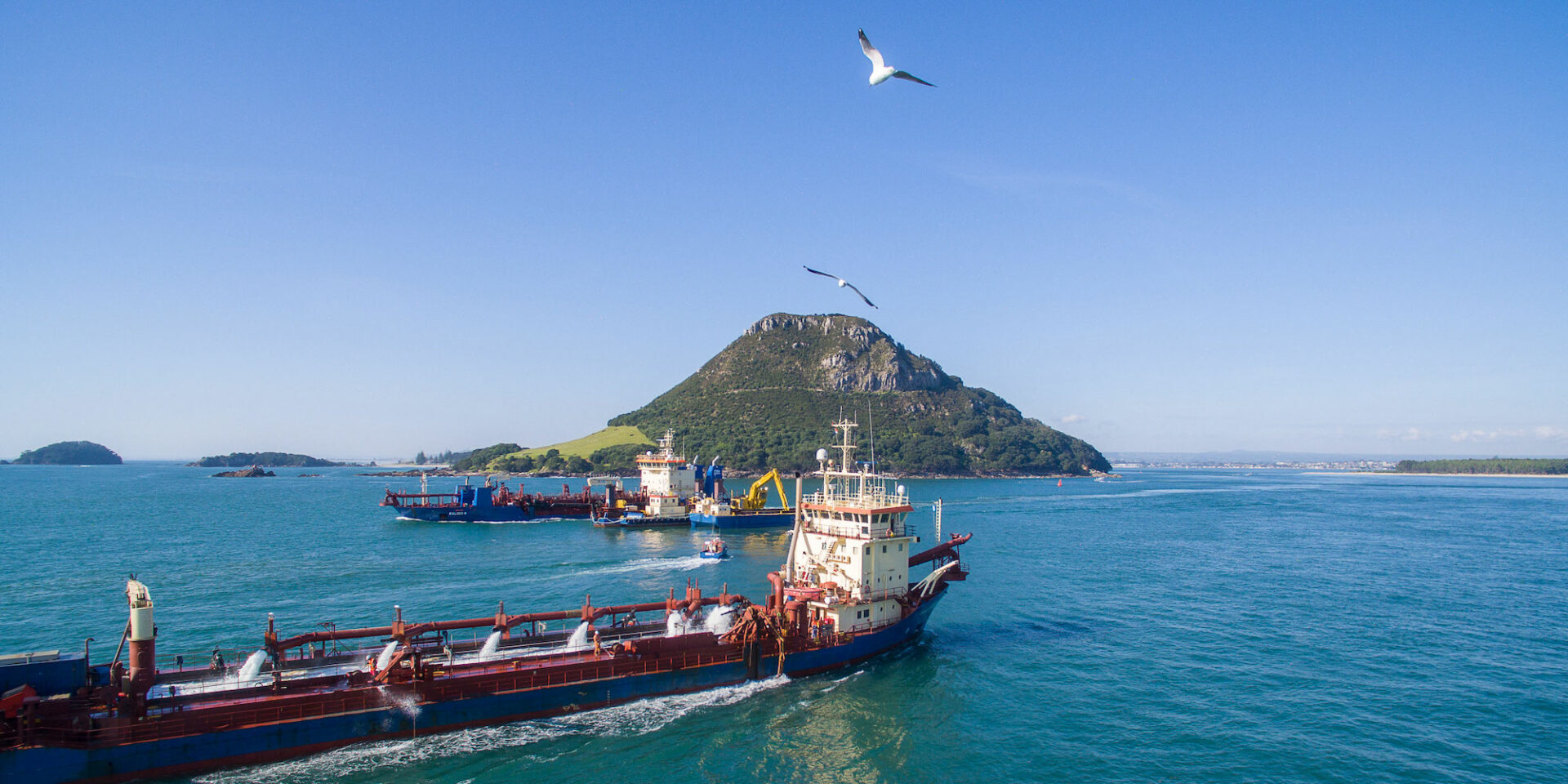Qualifications
- LLB (First Class Hons), BA, Victoria University of Wellington 2015
- Admitted to the Bar in New Zealand 2016
Community Activity
- Laura is a young professional director of Priority One and a committee member of the Bay of Plenty Resource Management Law Association.
- Laura is also a mentor for Project K which is run by the Graham Dingle Charitable Trust.
- She has previously volunteered with the Cambodian Charitable Trust and the Child Cancer Foundation.
Contact
- Laura is currently on parental leave
- DDI: +64 7 927 2236
- M: +64 27 391 3161
- E: laura.murphy@hobec.co.nz
Laura is currently on parental leave.
Laura specialises in all aspects of resource management law, including advising on resource consent processes, planning, designations and enforcement matters across a range of industry sectors and has appeared in the High Court, Environment Court and local authority proceedings.
Laura’s experience includes acting on the following projects:
- appeals on the Marlborough Environmental Plan on behalf of Manawa Energy Limited;
- applications for Customary Marine Title under the Marine and Coastal (Takutai Moana) Act 2011 on behalf of a number of interested parties;
- direct referral application on behalf of Port of Tauranga Limited;
- appearing for a submitter in relation to notices of requirement for the North West Transport Project in Auckland.
Laura is a committee member of the New Zealand Law Society’s Environmental Law Committee and the Bay of Plenty Resource Management Law Association, and a member of the Bay of Plenty Agricultural Advisory Group.
Laura grew up in Tauranga and loves practising law here in the Bay. Outside of work she enjoys spending time with her young family and friends, travelling and getting outdoors in our beautiful city.
Laura Murphy's Expertise
Laura Murphy's News & Resources

Fast-track amendments passed under urgency
Following a short Select Committee process, the Fast-track Approvals Amendment Bill passed through its third reading on 10 December 2025.
It now awaits royal assent before becoming law – our view is that this will be completed within the next week. The Bill puts forward changes to the already fairly contentious Fast-track Approvals Act 2024 which the Government purports will “promote grocery competition” and make beneficial “technical and machinery changes” following feedback from current fast-track system users.
The Bill’s provisions will come into force in two stages, some provisions having immediate legal effect upon royal assent, and others with a “lag” that will have effect on 31 March 2026.
Those changes with immediate legal effect include:
Limitation of appeal rights to only those persons or entities that are required to be invited to comment.
The ability for the panel to impose infrastructure conditions to ensure there is adequate infrastructure to support the project.
The ability for the Government to prepare Policy Statements, which will outline the regional and national benefits of certain activities. The panel must consider any relevant Government Policy Statement when making its decision (although none have been prepared at this time).
20 listed projects have had either their description and/or location changed in Schedule 2. Additionally a new power is available for applicants to request that the description or location of a listed project is changed by Order in Council.
Changes that will kick-in on 31 March 2026 include:
A cap on the timeframe that the Panel Conveners can set for the decision is 90 working days from the date comments are received (unless the applicant otherwise agrees to a longer timeframe).
A requirement that the panel must commence work within 5 working days of it being stood up.
A power that the Minister for Infrastructure can direct how the EPA conducts its functions under the Act, so long as such direction does not relate to a specific substantive application or person nor impede on a statutorily independent function of the EPA.
A requirement that comments provided to the panel by local authorities and administering agencies must be relevant to the substantive application and the decision the panel is required to make.
The pre-lodgement consultation requirement is shifted to a notification requirement for the majority of consultees. Opportunity must be provided to notifyees (at least 20 working days) to provide responses which must be incorporated into an application by it was informed by those responses.
Several changes that were initially put forward in the Bill, but were subsequently amended or abandoned, before it was passed include:
Removal of a draft provision requiring that the Panel Conveners stand up a panel within 15 working days of receiving an application.
The initial cap on decision timeframes was put forward as 60 working days from the date comments were received, but this was increased to 90 (as addressed above).
Removal of a (new) proposed power in which an applicant could raise concerns as to the suitability of prospective panel members.
Removal of a (new) provision in which the panel’s ability to invite comments from non-mandatory invitees would have been fettered by the requirement that they cannot be invited if their comments would be addressed by the local authority or administering agency.
This is a fairly high level summary of the main changes proposed, and there are many more changes which will impact on the fast-track process for all persons and entities involved. To know more about these changes, and what they may mean for you, please contact one of resource management members below.
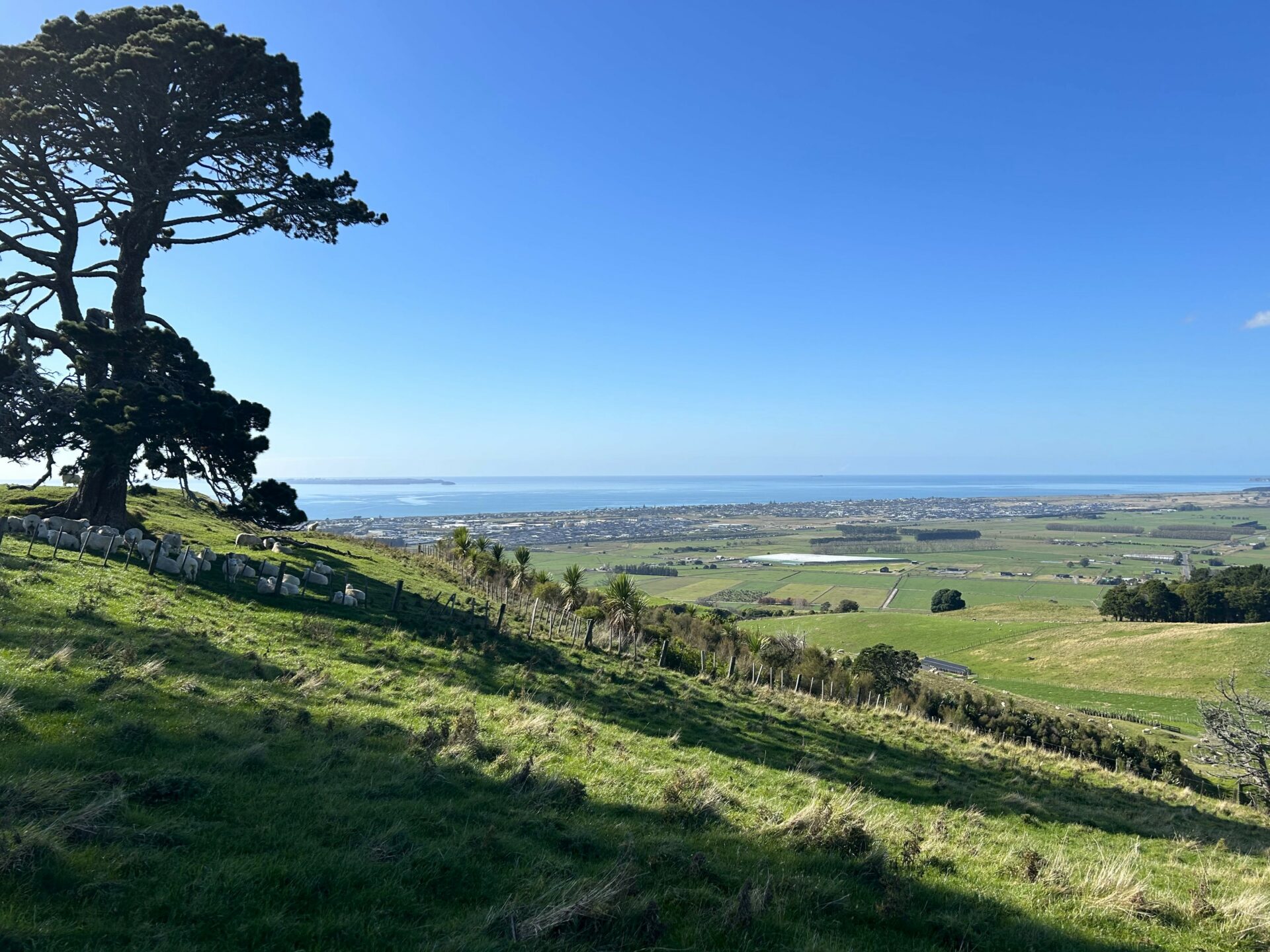
The new dawn of resource management law – consenting changes explained
The Government has introduced the two Bills that are intended to replace the Resource Management Act 1991 (RMA), these being the Natural Environment Bill (NEA) and the Planning Bill (PA).
The intention appears for these bills to read for the first time in the coming week, and for them to be enacted in mid-2026.
This article focuses on the implications of the new Bills for the consenting process. You can also read our article on the structure and new policy and planning framework of the Bills here.
Consenting is managed under both Bills generally following the existing split between consents/permits managed by regional councils (managed under the NEA) and consents managed by district councils (managed under the PA).
Resource consents are out, resource and planning permits are in
The consenting framework under the Bills align with the Government’s goals of enabling development and reducing regulation. These changes impact what effects can be considered and who can be involved in resource consent processes. A change in language will occur as some resource consents will become resource permits. The key changes to the way of changes in which resource permits and considered and made are:
Activity statuses: Controlled and non-complying activity classifications cease to exist. At this time it is unclear if controlled activities would become permitted or restricted discretionary under the system.
Effects: The consideration of effects of an activity will be curtailed by the Bills. Positive effects, cumulative effects and natural hazards are now included. The following effects are excluded: visual amenity, financial viability, precedent effects, internal effects and less than minor adverse effects (unless they give rise to a cumulative effect that is more than less than minor).
Permitted activities: The objective is for more activities to be permitted activities, subject to conditions. This is reflective in the prescriptive wording of the Bills’ guidance on classification of activities which provides that an activity should be permitted if it is acceptable, anticipated, or achieves the desired level of use, development, or protection of the natural environment or the adverse effects of the activity are known and can be managed (i.e. by way of conditions in a permitted activity rule).
Affected persons: Only those who are materially affected can participate in a permit application process. Limited notification will only occur if effects are more than minor, which is a distinct lifting of the threshold required under the RMA which provides that a person is effected if the effects on them are “minor or more than minor”.
Public notification: The threshold for public notification has also been lifted and will only occur where the adverse effects of the proposed activity on natural resources or persons (NEA) or built environment (PA) are significant.
Consent terms: Carried over from reforms made to the RMA in mid-2025 permits associated with long lived infrastructure and renewable energy generation:
Have a starting point of a 35 year duration; and
In the case of structures in the coastal marine area or beds of lakes and rivers have a maximum duration of 50 years. For other activities associated with renewable energy generation or long lived infrastructure (i.e. permits relating to water) the NEA makes it clear that the maximum duration is 35 years.
What does this mean for existing resource consents?
Existing consents will carry over into the new system. This provides important continuity for consent holders. The question then arises – what happens to my resource consent application?
A transitional consenting process will apply from the period one month after the Bills receive royal assent and once the Order in Council repealing the RMA is made – this is referred to as the transitional period. This transitional process provides that the traditional RMA process for consent application is to be followed, albeit with some modification:
The Bills’ procedural principles are to be adhered to.
Certain effects are excluded from the scope of what can be considered.
The “special circumstances” criteria is removed from the public notification test.
Spatial plans and national standards are to be considered, once they are developed.
If an application is lodged and granted pre-transition period then it will be treated as a resource consent under the RMA. If an application is lodged pre-transition period, but a decision is made post-transition period then it will be treated as a permit under either the PA or NEA.
The return of the Planning Tribunal
The Planning Tribunal is getting a second-wind although only in name as the scope of its jurisdiction is different to the Planning Tribunal of years gone. This new tribunal will be established as a division of the Environment Court and will address administrative matters during the consent consideration process including, but not being limited to: requests for further information, interpretation of permit conditions, notification decisions, and striking out permit conditions that are deemed to be out of scope.
The Planning Tribunal will not hear appeals on plans, applications for notified permits (where there are third party participants, designations – nor will it deal with enforcement actions.
Automatic consent extension
Additionally, the Government introduced the Resource Management (Duration of Consents) Bill on 9 December 2025, which was passed under urgency on 10 December 2025 – the only stage left before it becomes law is for it to be given royal assent.
This Bill seeks to automatically extend resource consents that are due to expire before the new Bills are in force, and to deem that recently expired consents are reinstated and their expiry automatically extended. The Bill provides that:
Resource consents that would otherwise expire before 31 December 2027 are automatically extended until that date.
Recently expired resource consents (where an application for a replacement consent has been made under section 124 of the principal Act, but not yet determined) are deemed to be reinstated and extended until 31 December 2027.
Consents relating to freshwater are excluded from extension beyond a total duration of 35 years.
The resource management space is rapidly changing in New Zealand. We will continue to provide updates as the changes process. If you would like to know more about how these changes will affect you, or you would like assistance drafting a submission (once the submission period dates are announced), please contact one of our Resource Management team members below.

Resource management law reform is here – the policy and planning structure explained
Fulfilling its promise, the Government introduced the two Bills that are intended to replace the Resource Management Act 1991 (RMA), these being the Natural Environment Bill (NEA) and the Planning Bill (PA).
The intention appears for these Bills to read for the first time in the coming week, and for them to be enacted in mid-2026.
This memorandum will address the policy and planning structure of the new system. For information about changes to the consenting process please see our article here.
By in large, the Bills follow the recommendations made in the blueprint for RMA reform produced by the Expert Advisory Group in March 2025. Each Bill serves an interrelated although distinct purpose but both seek to establish a framework for how the new system will operate, being:
For the NEA, for the use, protection, and enhancement of the natural environment; and
For the PA, for planning and regulating the use, development, and enjoyment of land.
How is the new system structured?
The Bills establish a hierarchy of instruments, similarly to that under the RMA. Each instrument must implement the instrument directly preceding it in this hierarchy (and must only implement a higher instrument if there is a requirement to do so in that higher instrument). This hierarchy is as follows, in descending order:
Goals
National Policy Direction
National Standards
Regional Spatial Plan
Land Use Plans and Natural Environment Plans
As was, and is, the case for the RMA the devil lies in the detail so it is likely that the detail of matters such as the allocation of resources, status of particular activities, etc will be fleshed out in greater detail in the national level documents. It will be important to stay abreast of the changes being made so that you can participate in all relevant stages of implementation of the new system (where you are able to) to ensure that your particular interests are put forward and preserved.
Goals
Comparatively to the expansive purpose of the RMA, the purposes of the Bills are intended to be deliberately straightforward and descriptive. Instead of an overarching purpose, the substantive direction for the system is provided by the goals in the Bills which must be sought to be achieved when undertaking functions or duties or exercising powers under the Bills. The goals sit at the top of the hierarchy but there is no inherent hierarchy within the goals themselves. These goals are intended to define the outcomes that the systems are trying to achieve –
The PA’s goals are centred around matters such as separation of incompatible land uses, enabling development of land, planning for infrastructure demand (current and future) and protecting outstanding natural features and landscape, and significant historic heritage.
On the other side of the coin, the NEA’s goals focus on use and development of natural resources within environmental limits, safeguarding the life supporting capacity of these natural resources, and achieving a no net loss of indigenous biodiversity.
Some RMA matters of national importance have been carried over into these goals, albeit with modification. Notably absent are goals concerning amenity values, climate change related effects, and the relationship with Māori with the environment.
There is also no “principles of Te Tiriti o Waitangi” provision, as the goals instead provide for Māori interests to be accounted for by way of consultation and participation in the process of creating the planning instruments. This is a pivot from the Te Tiriti provisions in the RMA, and the Bills are prescriptive in how they meet the Crown’s Te Tiriti obligations. Notably, the Bills provide for negotiation between the Crown and PSGE as to how existing and new Treaty settlements will operate under this new system.
National Policy Direction
A combined National Policy Direction under each Bill will be prepared centrally and will particularise the goals and direct how they must be achieved. National Policy Direction will also address how conflicts between the NEA’s and PA’s goals are to be resolved. The Ministry for the Environment has advised that the first package of National Policy Direction will be released at the end of 2026.
National Standards
National Standards, like National Policy Direction, will be prepared centrally and will be intended to be an instrument that provides procedural, regulatory, and administrative consistency, specific direction on how a NEA or PA goal is to be achieved in relation to a matter that is not controlled or covered by a National Policy Direction. In our view these standards will have the most impact on how the lower level instruments will be formed.
Most notably, these standards will set some environmental limits and give direction as to the nation’s standardised zoning which for all intents and purposes are “rules” that must be implemented. With respect to environmental limits these must be set for air, freshwater, coastal water, land, soil, and indigenous biodiversity and are to be put in place to protect human health and the life-supporting capacity of the natural environment.
An important objective of the new system is the establishment of greater consistency between council plans across New Zealand through greater standardisation which will be driven for the large part by National Standards. This will be implemented by a National Standard that specifically addresses standardisation. Mechanisms are in place whereby a councils can depart from the standardisation which requires provision of a justification report, detailing why a departure is warranted.
Regional Spatial Plan
In the new system, there must be a combined plan for each region at all times, which will consist of a Regional Spatial Plan and a natural environmental plan (under the NEA) for the region and a land use plan (under the PA) for each district in the region. These are the main point of integration between the PA and NEA regimes. Unlike national level documents, Regional Spatial Plans are more akin to your “boots on the ground” RMA instrument, and are intended to set strategic direction for development and public investment in a particular region for a period not less than 30 years.
With respect to environmental limits prescribed in National Standards, Regional Councils are to implement these into their Regional Spatial Plans and if a less stringent limit is so be established, the Council must first provide a justification report to the Minister. No justification report is required if a Regional Council wants to establish a more stringent environmental limit.
Land Use Plans
Land Use Plans are established under the Planning Bill and regulate the use and development of land within a district and are by all means replacements of district and city plans under the RMA.
Natural Environmental Plan
This plan is prepared under the NEA by Regional Council and its purpose is to enable and regulate the use, protection, and enhancement of natural resources in a region and to assist Regional Councils in carrying out their functions and responsibilities under the NEA – these are akin to and replace regional plans under the RMA.
Under a NEA a regional council will be responsible for allocating natural resources which can be done through permitted activities and permits granted:
In the order in which applications are lodged (i.e. the status quo of first in first served);
Market-based consenting centred around auctions and tenders. This form of allocation is not permitted to be used until specified in a national standard which can also operational details as to how the process if to be followed; or
Comparative consenting which involves an assessment of applications that will use the same resource against one another taking into account the merits of each application and criteria set out in the relevant plan or a national standard.
What is the timeframe?
The RMA will continue to survive for the time being, until such time as the Minister is satisfied that the combined plans for every region have been notified. At such time, an Order in Council will be made that specifies the “transition date” which will bring to an end the “transitional period” (the transitional period begins one month after both Bills obtain royal assent). On the transition date the RMA will be repealed, the NEA and PA come into full force, and legal effect will be given to all Land Use and Natural Environment Plans. The PA specifies that the transition date cannot be later than 31 December 2027 and no sooner than 6 weeks after the Order in Council comes into force.
Whilst not confirming a specific date, the Government’s intention is that this entire process (i.e. final decisions on all plans are made) should be completed in 6 years (although depending on when the Order in Council is made, the RMA may only survive for a portion of that 6 year period).
Environmental limits
We touched on environmental limits earlier, but this is an important change in the new system as it has a big impact on use of finite resources. Environmental limits are:
Human health limits, set by the responsible Minister in national standards; and
Ecosystem health limits, set by regional councils in its natural environment plan. The detail of how these limits are to be set will be set out in the national standards.
These environmental limits can require:
An action plan (being a plan developed by a Regional Council setting out decision making processes, reviews of permit conditions, and preparations of rules in a natural environment plan);
A cap on natural resource use (i.e. a maximum amount of a particular resource, e.g. water from a River, that Regional Council may allocate through plan rules and permits); or
Both an action plan and cap.
Regional Council is required to avoid breaching the set environmental limits and must take action if a limit is breached or if there is sufficient evidence to indicate that a limit will be breached.
Regulatory relief
The PA establishes a regulatory relief framework in which Councils are required to consider the impact on private landowners as a result of planning controls on indigenous biodiversity, significant natural areas, significant historic heritage, sites of significance to Māori, outstanding natural features and landscapes, and areas of high natural character. Where any controls create an impact on the landowner that is more than minor, the council must provide relief. Relief can take a variety of forms including, but not being limited to, development rights, no-fee consents, rates relief, access to grants, provision of expert advice, monetary compensation, or land swaps.
This is a rapidly changing area of New Zealand’s law and will eventually impact every person in the country in one way or another. We will continue to release further detailed updates on the Bills as changes are made. If you would like to know more about how these changes will affect you, or you would like assistance drafting a submission (once the submission period dates are announced), please contact one of our Resource Management team members below.
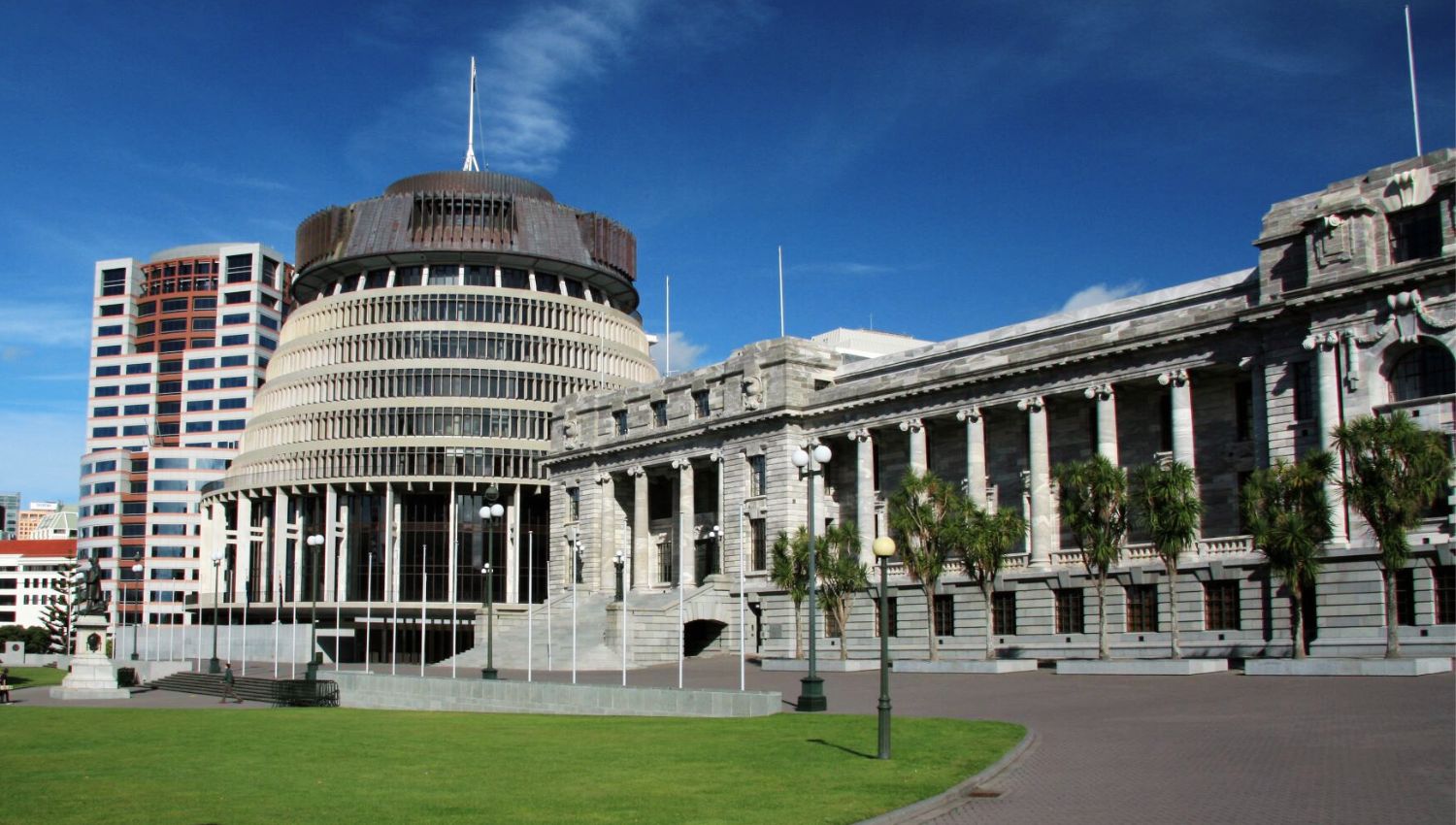
RMA Round Up
The RMA space continues to change with a constant flow of proposed reforms. This article rounds up where things stand as at the end of July 2025.
Resource Management Act 1991
The RMA remains in place, having already been amended last year through the Resource Management (Freshwater and Other Matters) Amendment Act 2024.
The next round of amendments to the RMA will occur shortly, via the Resource Management Act (Consenting and Other Matters) Amendment Bill which is currently before Parliament. The Environment Committee has reported back to Parliament on the Bill, and the Bill has passed its second reading.
However, further changes are expected, with Minister Bishop announcing that an Amendment Paper will be introduced to Parliament which will stop plan reviews and changes by councils. The Amendment Paper:
Will exempt a limited number of plan changes. Examples of automatic exemptions include Streamlined Planning Processes and private plan changes (which are initiated by landowners and developers).
Allow councils to apply to the Minister for the Environment for an exemption to continue or notify a new plan change.
RMA replacement
There is no further update at this stage on the proposed Planning Act and Natural Environment Act which are to replace the RMA. At this stage, the available references are the Blueprint for resource management reform delivered to the Government in late 2025, and the Cabinet response paper.
Minister Court has said that Government has been working tirelessly to shape up the new system for introduction by the end of the year, passing by mid-2026, and the bulk of implementation through 2027.
National policy direction
In early June the Government released its consultation on the national direction package comprising:
Package 1: Infrastructure and Development
Package 2: Primary Sector
Package 3: Freshwater
Submissions on that close on Sunday 27 July 2025.
Package 4: Going for Housing Growth package was released later in June, and submissions on its proposals close on 17 August 2025.
The policy changes are intended “to minimise the implementation burden for local government and have been developed with the new system in mind, with these changes expected to carry over and transition into it when the time comes” so the policy changes will be in force before the RMA replacement.
Conclusion
With so much change afoot, it\'s certainly a time for RMA users and practitioners to be agile. If you have any questions or wish to discuss the RMA reforms, please get in touch with our resource management team.

Fast-track Approvals Bill passed into Law
The Government is aiming to deliver on its promise to deliver a new fast-track consenting regime before the end of 2024. The Fast-track Approvals Bill has passed through its third reading in Parliament on 17 December 2024 and we would expect it to be given royal assent before the end of 2024 meaning that it will become law.
At the committee of the whole house stage the Minister Responsible for Resource Management Reforms, Chris Bishop, introduced an amendment paper which tabled various substantive amendments to the bill. These amendments were incorporated into the bill through the committee of the whole house stage with little amendment. The amendments are largely favourable to applicants.
The significant changes that have been made to the bill since the Select Committee’s report are as follows:
The listed projects have now been included in Schedule 2. The projects listed were not a surprise as they has been previously announced by the Government towards the end of the Select Committee stage.
There are new provisions that allow the Minister for Infrastructure (currently Minister Bishop) to determine that a project is a ‘priority project’. An applicant can apply to the Minister for its project to be given priority, or the minister can make this decision of their own initiative. Panels must be set up for priority projects before non-priority projects.
Applications cannot be lodged before 7 February 2025.
There are some changes to the information requirements, with a focus on providing information to show how a project is consistent with the purpose of the bill (i.e. to facilitate delivery of infrastructure and development projects with significant regional or national benefits).
Before declining an application, a panel must provide its draft decision to the applicant before it is finalised. At this stage, the applicant can propose modifications or conditions to its application which functions as a pseudo ‘second chance’ to adapt an application to address a panel’s concerns.
The scope for the reasons for declining an application has been expanded to include where there is a breach of s 6 of the Resource Management Act 1991 (which relates to Treaty settlements).
The timeframe in which a Panel must make its decision has been increased from 25 working days to 30 working days from the date specified for receiving comments, but the power for a panel to extend the timeframe for making a decision beyond 30 working days from the date comments were to be received has been removed. However, the panel convener can set a timeframe that is longer than 30 working days if they consider that to do so is appropriate given the scale, nature and complexity of the approvals sought.
The eligibility criteria for the panel convener has changed so that it can now be a senior lawyer with expertise in resource management. There is no longer a requirement for the panel convener to be a retired or active judge.
As set out above, applicants will have to wait until 7 February 2025 to lodge an application with the Environmental Protection Authority. It will then be interesting to see how quickly panels are set up. 2025 is sure to be an interesting year for consenting in New Zealand, with many complex and exciting projects included in Schedule 2.

Another RMA amendment – freshwater and other matters
Another amendment Act, in a long line of RMA amendment Acts, came into force on 24 October 2024. The Resource Management (Freshwater and Other Matters) Amendment Act 2024 (Act) makes the following key changes to the RMA:
Freshwater
The “hierarchy of obligations” in clauses 1.3(5) and 2.1 of the National Policy Statement for Freshwater Management 2020 (NPSFM) are no longer considerations for resource consent decisions. This applies to resource consent applications lodged before commencement if the consent authority has not, before commencement, served notice of its decision on the application.
Provides that councils are not to notify “freshwater planning instruments” (giving effect to the NPSFM) before the a new NPSFM has been published or the end of 2025. This is a year later than the RMA previously required. Exemptions from this delay can be sought in certain circumstances.
Section 107 of the RMA has been amended to clarify that councils can grant resource consent for discharges that would result in significant adverse effects, provided conditions reduce effects over time. This is a direct response to the Environmental Law Initiative’s successful judicial review of a discharge permit in mid Canterbury.
Freshwater / Farming
The Act removes the use of low slope maps under the Resource Management (Stock Exclusion) Regulations 2020 that restricted the grazing of beef, cattle and deer on low slope areas near water bodies. Low slope maps are to be replaced with freshwater farm plans and/or regional plans wherein Regional Councils can determine where stock grazing needs to be excluded on a case-by-case basis.
Further, the Act repeals the permitted and restricted discretionary activity regulations and associated conditions for intensive winter grazing in the National Environmental Standards for Freshwater (NES-F). The Act replaces these with standalone regulations on riparian setback and critical source areas.
Significant Natural Areas
Local authorities have an obligation in the National Policy Statement for Indigenous Biodiversity (NPS-IB) to identify and include new significant natural areas (SNA) by 4 August 2028. These identification and incorporation requirements are suspended for three years by the Act which amends the timing provisions for when councils must publicly notify a proposed plan or plan change that gives effect to the NPS-IB. This change seeks to provide sufficient time for Government to undertake a thorough review of how SNAs operate.
Coal Mining
The NPS-FM, NPS-IB and the NES-F all provide a consent pathway for mining activities in or near wetlands and SNAs, except for new coal mining activities. The Act aligns the consenting pathway for new coal mining activities with the pathway for other mineral extractive activities across the NPS-IB, NPS-FM and the NES-F.
National Direction
The Act enables the Minister for the Environment to amend national direction (excluding the New Zealand Coastal Policy Statement) without using the standard process where the amendment is for a range of purposes including to give effect to international obligations and to change timeframes.

Fast-track Approvals Bill – Select Committee report back
On Friday 18 October 2024, the Environment Committee reported back on the Fast-track Approvals Bill which was introduced on 7 March 2024. We take a look at what’s changed, what stays the same, and the road ahead.
What’s changed?
The Environment Committee has recommended the following key changes.
The purpose of the Bill has been re-framed as “to facilitate the delivery of infrastructure and development projects with significant regional or national benefits”.
Timeframes are amended slightly to provide the Expert Panel with 10 working days (rather than five) from their appointment to issue an invitation for written comments, and to provide those invited to comment with 20 working days (rather than 10) to provide those comments.
Expert Panels no longer include an iwi appointee. However Expert Panels must include at least one member who is suitably qualified in te ao Māori and Māori development.
The Expert Panel (not Ministers) will make final decisions on substantive applications.
When considering applications, the Expert Panel must give the “greatest weight” to the purpose of the Bill.
The Expert Panel may decline an approval if it forms the view that the activity or activities for which the approval is sought would have one or more adverse impacts, and those adverse impacts are sufficiently significant to outweigh the purpose of the Bill even after any conditions that the panel may set in relation to those impacts are taken into account.
The lapse provisions have been amended to allow some discretion. Lapse periods must be at least two years, and if not specified, a default lapse period of five years will apply.
What’s stayed the same?
The Bill is still an ‘omnibus’ bill which covers a wide range of processes, not just resource consents.
A person who has applied for an approval under another Act must withdraw that application before lodging a substantive application that seeks a corresponding approval under the Bill for the same, or substantially the same, activity.
The Expert Panel still has a window of 25 working days from the closing date for comments to issue its decision, which is significant given the scale and complexity of many of the projects listed (although suspensions are provided for and there is the ability to extent that timeframe).
Appeal rights are available to the High Court on a point of law only. Rights of judicial review are not affected by the Bill.
The road ahead
The Bill still refers to Schedule 2A and 2B (with provisions for Part A listed projects and Part B listed projects), despite the Minister’s announcement on 6 October 2024 that “Because of the unprecedented level of interest in this process, it became clear that so many projects were suitable for 2A that having a separate list for Schedule 2B became unnecessary, so it will be deleted from the Bill.” Presumably this will be amended as the Bill progresses through Parliament.
For listed projects, the immediate issue will be resourcing the processing of those. With 149 projects selected for listing in the Bill, it remains to be seen how many will convert into lodged applications (and how quickly). There is also a mandatory requirement to consult specified persons before lodging the substantive application with the EPA.
Once applications are lodged, Experts Panels will need to be formed to process applications. Overall, the fast-track process is likely to be resource intensive for all participants.
Seeking referral for fast tracking is still possible (as was the case with the COVID-19 (Fast-track) Consenting Act 2019). However, the question will be the extent to which there is capacity within the system for the processing of referral applications, and referred projects, in light of the volume of listed projects.
The Bill is expected to become law before the end of the year.
For any questions, please contact one of the below who all have experience with fast-track applications.

Phase three of the Resource Management Reforms
Last week, the Government has announced that two new laws are to be developed to replace the Resource Management Act 1991 (RMA), with the enjoyment of property rights as their guiding principle.
Replacement of the RMA is part of the final phase (phase three) of the Government’s reform of our resource management system.
The Government’s intention with a property rights focused system is to allow people to do more on their own property more easily, so long as it does not harm others. Where harm to others results from an activity, the intention is that the new system should step in to protect a property owner’s rights from being compromised by unreasonable activities occurring around them.
Cabinet has agreed on ten core design features of the new resource management system. These features are still at a high level and more detail will be required before the effectiveness of these methods can be assessed in achieving the Government’s aspirations. The ten features are as follows:
Narrow the scope of the resource management system to focus on managing actual effects on the environment.
Establish two acts with clear and distinct purposes – one to manage environmental effects arising from activities and the other to enable urban development and infrastructure.
Strengthen and clarify the role of environmental limits and how those are to be developed.
Provide for greater use of national standards to reduce the need for resource consents and simplify council plans.
Shift the focus away from consenting before activities can get underway, and towards compliance, monitoring and enforcement of activities’ compliance with national standards.
Use spatial planning and a simplified design process to lower the cost of infrastructure.
Realise efficiencies by requiring one regulation plan per region, jointly prepared by regional and district councils.
Provide for a rapid low cost resolution of disputes between neighbours and between property owners and councils, with the potential for a new Planning Tribunal (or equivalent).
Uphold Treaty of Waitangi settlements and the Crown’s obligations.
Provide faster and cheaper processes with less reliance on litigation, contained within shorter and simpler legislation that is more accessible.
An expert advisory group has been appointed to assist with the development of the new system, whose expertise includes resource management law, planning and te ao Māori. The Government expects key aspects of the new system to go before Cabinet for agreement before the end of the year with the intention for legislation to be passed before the next election.
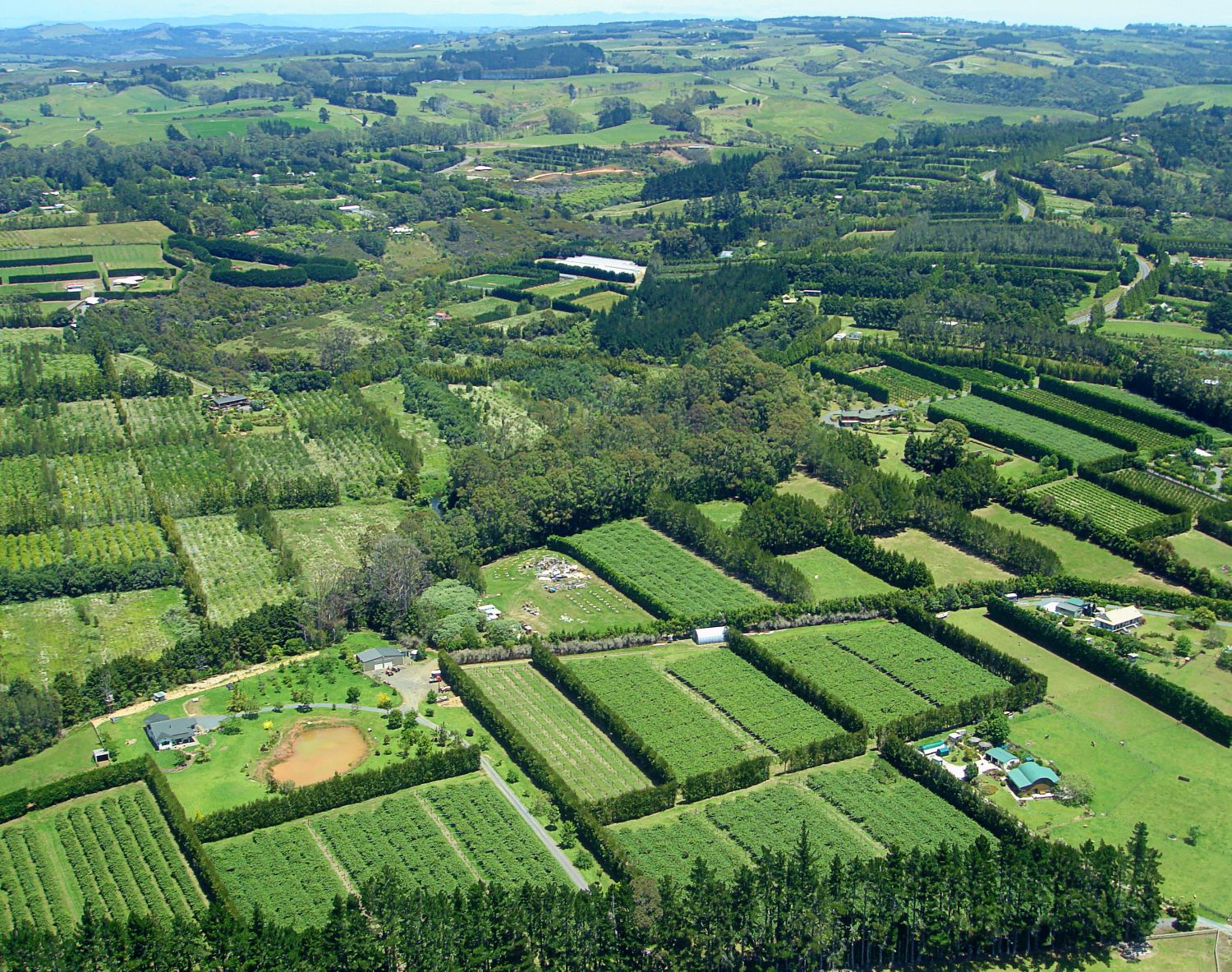
Stuck in the Highly Productive Mud
The Environment Court recently released its decision in Blue Grass Limited v Dunedin City Council [2024] NZEnvC 83 which deals with the definition of Highly Productive Land (HPL) in the National Policy Statement for Highly Productive Land (NPS-HPL).
The Court has found that it is not open to applicants in consent processes to challenge the Land Use Capability (LUC) of their land as mapped by the New Zealand Land Resource Inventory (NZLRI), even if more detailed site investigations conclude that land is not LUC 1, 2 or 3. Put another way, land zoned rural that the NZLRI has mapped as LUC 1, 2 or 3 is ‘stuck’ as HPL for the time being, until regional councils introduce changes to their regional policy statements.
The Environment Court was tasked with answering the question of whether more detailed mapping undertaken by consent applicants since the commencement of the NPS-HPL (17 October 2022) using the LUC classification system could prevail over the identification of land as LUC 1, 2 or 3 as mapped by the NZLRI. This would in turn determine whether land is classified as HPL. The Court’s answer was no.
The NPS-HPL provides that regional councils must undertake mapping of HPL within its region and as soon as is practicable (but not later than 3 years from the commencement date of the NPS-HPL) notify a proposed regional policy statement that identifies all HPL by way of maps.
Regional councils are still undertaking this mapping and until this is completed cl 3.5(7) of the NPS-HPL sets up the interim definition of HPL as being land which “at the commencement date” of the NPS-HPL is (with some exclusions):
(i) zoned general rural or rural production; and
(ii) is identified as LUC 1, 2 or 3.
Dunedin City Council’s position was that the qualifier of “at the commencement date” in cl 3.5(7) means that the LUC mapping must have been in place at the commencement date. Its submission was that this creates a holding position for protection of HPL until the Otago Regional Council completes its long term mapping and undertakes a change to the RPS as required by clauses 3.4 and 3.5 of the NPS-HPL. That argument was accepted by the Court – the interim definition was intended to create a holding position protecting all land that may be classified as HPL by regional council mapping, until that mapping does occur.
Ultimately, what this means is that landowners and consent applicants are unable to undertake their own mapping of specific sites to seek to lessen the LUC of their land and therefore remove it from an HPL classification, in turn easing the consenting pathway. They must instead wait for the relevant regional council to notify a change to its regional policy statement relating to HPL, and then participate in that process if they seek to argue that their land is not HPL.
Alternatively, land owners and consent applicants will need to rely solely on the exceptions for use and development of HPL contained in cl 3.6, 3.8, 3.9 and 3.10. We expect applicants will seek to test the boundaries of these exceptions in light of this decision. Knowing the LUC classification of rural land as per the NZLRI mapping will have increased importance for purchasers considering potential development opportunities, given the restrictions the NPS-HPL contains and its lack of ‘wiggle room’.
If you require any assistance with or wish to discuss this decision or the NPS-HPL generally, please feel free to get in touch with a member of our specialist environment law and resource management team.

Fast-track Approvals Bill – the third fast-track consenting regime
The fast-track consenting regime proposed by the National/ACT/NZ First coalition government was introduced to Parliament on 7 March 2024. The most awaited aspect of the Fast-track Approvals Bill – the list of projects to be fast-tracked – is blank at this stage.
A Fast-track Advisory Group of experts is to be established in the coming weeks to advise Ministers on what projects should be included in the legislation, following which the projects will be inserted into the schedules.
The key aspects of the Fast-track Approvals Bill are as follows.
Purpose
The Bill’s purpose is to provide a fast-track decision-making process that facilitates the delivery of infrastructure and development projects with significant regional or national benefits.
The Bill’s purpose has no reference to continuing to promote the sustainable management of natural and physical resources, unlike the COVID-19 Recovery (Fast-track Consenting) Act 2020 (FTA).
Processes covered
The Bill covers a much greater range of consents/approvals. In addition to resource consents and notices of requirement for designations under the RMA it includes consents/approvals under the Conservation Act 1987, Wildlife Act 1953, Freshwater Fisheries Regulations 1983, Reserves Act 1977, Heritage New Zealand Pouhere Taonga Act 2014, Exclusive Economic Zone and Continental Shelf (Environmental Effects) Act 2012, Crown Minerals Act 1991, and Fisheries Act 1996.
The Bill also makes a change to Environment Court processes under the Public Works Act 1981 for projects dealt with under the Bill.
The FTA only dealt with resource consents and notices of requirement for designations under the RMA.
Treaty of Waitangi
The Bill requires persons exercising functions under it to act in accordance with Treaty settlements and recognised customary rights.
The Bill does not contain a requirement to act in a manner that is consistent with the principles of the Treaty of Waitangi, unlike the FTA.
Projects
The Bill provides for two types of listed projects, and referred projects.
The two types of listed projects will be:
Part A – listed projects that can be referred straight to an Expert Panel.
Part B – listed projects that may be considered by the joint Ministers for referral to an Expert Panel.
The Bill contains criteria for being a referred project including whether the project will have significant regional or national benefits. An example of projects that may qualify include projects that will increase the supply of housing, address housing needs, or contribute to a well-functioning urban environment.
Projects are referred to Expert Panels for consideration.
Expert Panel
The Expert Panel will be set up in a similar way to Expert Consenting Panels under the FTA. However, Expert Panels will only be making recommendations to the ‘joint Ministers’ who will make the decisions.
The joint Ministers
For the most part, the responsible ‘joint Ministers’ under the Bill are the Ministers for Infrastructure, Regional Development and Transport. This is a move away from the Ministers for the Environment and Conservation under the FTA, although the latter will join the others for Wildlife Act matters.
Appeal rights
Appeal rights are available to the High Court on a point of law only. Rights of judicial review are not affected by the Bill.
Select committee process
The Bill has a strong focus on infrastructure and development and will be controversial. It has been referred to the Environment Committee for a select committee process and is open for submissions until 19 April 2024. Please get in touch if you would like to make a submission or discuss things further.

A step forward for climate change – Smith v Fonterra Co-Operative Group Limited
On 7 February 2024 the Supreme Court released its decision in Smith v Fonterra and unanimously agreed to not strike out Mr Smith’s claims against seven of New Zealand’s largest green house gas (GHG) emitting companies.
The threshold to strike out a claim is high and requires that there be no reasonably arguable claim. Like any other plaintiff with a tenable claim, Mr Smith will be entitled to have his case heard.
Background
The case concerned claims by Mr Smith, an iwi leader and elder of Ngāpuhi and Ngāti Kahu and a climate change spokesperson for the Iwi Chairs Forum, against Fonterra, Genesis Energy, Dairy Holdings Ltd, NZ Steel Ltd, Z Energy, Channel Infrastructure and BT Mining (Respondents). The claims asserted that the Respondents’ GHG emissions have contributed and will continue to contribute to global warming. This has caused and will cause harm to Mr Smith, his whānau, his descendants and others.
Mr Smith’s claim comprised of three causes of action:
Public nuisance;
Negligence; and
A proposed new tort involving a duty to cease contributing to damage to the climate system.
The Respondents applied to strike out Mr Smith’s proceeding on the basis that it raises no reasonably arguable cause of action.
The High Court struck out Mr Smith’s claims in public nuisance and negligence in 2020, but declined to strike out his claim based on the proposed new tort. The Court of Appeal went further and struck out all three causes of action.
The Supreme Court’s decision
The Supreme Court found that it was in no position to find that Mr Smith’s causes of action were untenable. It emphasised the high threshold for a strike out application noting that “pre-emptive elimination of proceedings is only appropriate where it can be said that whatever the facts proved, or arguments and policy considerations advanced at trial, a case is bound to fail”.
The common law has not previously grappled with a crisis as all-embracing as climate change. However, the Supreme Court stated that this area of common law must develop “in the fertile field of trial, not on the barren rocks of a strike out application”.
Can Tikanga inform the formulation of tort claims?
Mr Smith claims, in accordance with tikanga, a whakapapa (genealogical) and whanaungatanga (kinship) relationship to the whenua (land), wai (fresh water) and moana (sea) around his land. His claim is that the respondents contributed to climate change effects that caused and will cause ongoing injury to the customary, cultural, historical, spiritual and nutritional values associated with these places. His tikanga based connection with these places provides the foundation for the claim that an injury to place is also an injury to himself, his whānau and descendants.
The Supreme Court stated that whatever the cause of action, the trial court will need to grapple with the fact that Mr Smith purports to bring proceedings not merely as an alleged proprietor who has suffered loss, but also as a kaitiaki acting on behalf of the whenua, wai and moana. It must consider some tikanga concepts of loss that are neither physical nor economic. Addressing and assessing matters of tikanga simply cannot be avoided.
Mr Smith’s case can now proceed to a full trial in the High Court.

New government and a new round of RMA reforms to go with it
The new government’s coalition agreements gives a clear indication of its plans in relation to its resource management legislative reform for the next three years. With Labour’s legislation to be scrapped in favour of a return to the Resource Management Act 1991 (RMA) (with some amendments), and further significant reform on the horizon, it is going to continue to be an interesting and transitional time in the RMA space.
The coalition agreements are clear, as National was prior to the election, that the Natural and Built Environment Act 2023 (NBEA) and the Spatial Planning Act 2023 will be repealed by Christmas, and the RMA will be reinstated, with amendments. These amendments are intended to ensure that it is easier to consent new infrastructure (including renewable energy projects), streamline the plan preparation process, and importantly establish a ‘fast track, one stop shop’ for consents and permitting processes for regional and national projects of significance (the process will involve a referral by Ministers for suitable projects). This fast track process is intended to be introduced for first reading in the first 100 days of the Government, no doubt to replace the fast track process currently contained in the NBEA.
In the longer term, the intention is for the RMA to be replaced with new resource management laws that are based on enjoyment of property rights as their guiding principle. What this will look like remains unclear, but is likely to mean less regulation and control on what can be done as of right.
Also under review will be the National Policy Statement on Indigenous Biodiversity, with a particular focus on reconsidering the mapping of significant natural areas that is required by the current policy statement. The National Policy Statement on Freshwater Management and the National Environmental Standards on Freshwater Management will be replaced, to “better reflects the interests of all water users”, putting the focus squarely on use rather than preserving and restoring where degraded the state of water bodies, as is the current priority.
There is a strong focus on infrastructure, with a National Infrastructure Agency to be established to coordinate government funding, connect investors with New Zealand and improve funding, procurement and delivery to prioritise projects of regional and national significance. All work on Three Waters will stop immediately, with assets to be returned to council ownership.
A review of all legislation that refers to the ‘principles of the Treaty of Waitangi’ will also be conducted, with all such references to be either repealed or replaced with specific words relating to the relevance and application of the Treaty.
Interestingly, the Minister for the Environment is now a Minister outside of Cabinet – Penny Simmonds, with Act’s Andrew Hoggard, the Associate Minister, also outside of Cabinet. The more powerful Ministerial positions who will deliver RMA reform look to be Chris Bishop who will take the new Ministerial position of Minister Responsible for RMA Reform as well as Minister of Housing and Minister for Infrastructure, and will be supported by Act’s Simon Court who will also be a Minister Responsible for RMA Reform. Shane Jones will be Minister for Resources (a new position).
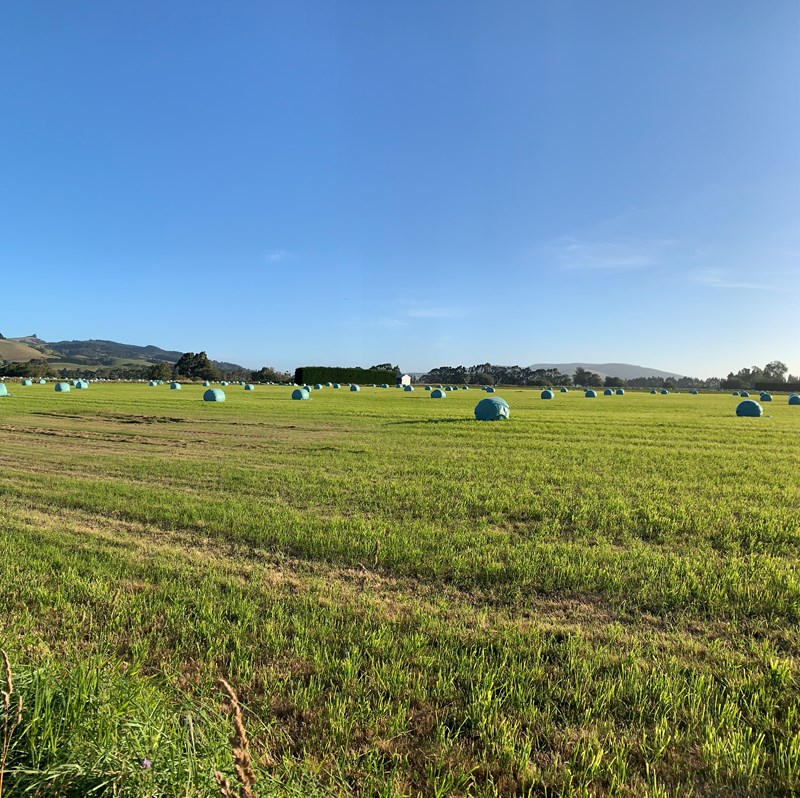
Amendments to the National Policy Statement for Highly Productive Land (NPS-HPL)
The NPS-HPL came into effect on 17 October 2022. Since then, two issues have been identified about its restrictions on non-land-based uses and development. These are:
The lack of a clear consent pathway for construction of new “specified infrastructure” (which includes renewable energy, such as solar farms) on highly productive land (HPL) in clause 3.9(2)(j)(i) of the NPS-HPL; and
The lack of a clear consent pathway for development and relocation of intensive indoor primary production and greenhouses on HPL.
The discussion document can be found here: Potential-amendments-to-the-NPS-HPL-discussion-document.pdf (environment.govt.nz)
Consent Pathway for “Specified Infrastructure”
The proposed change is to clause 3.9 of the NPS-HPL which states that:
3.9(2) A use or development of HPL is inappropriate except where at least one of the following applies to the use or development…
(j) It is associated with one of the following, and there is a functional or operational need for the use or development to be on the HPL:
(i) The maintenance, operation, upgrade, or expansion of specified infrastructure:
(emphasis added)
As currently worded, the NPS-HPL does not provide a clear consent pathway for construction of specified infrastructure on HPL, only its “maintenance, operation, upgrade or expansion”’. This limits the ability to construct new specified infrastructure on HPL at pace and limits certain providers (such as renewable energy generators or installers of fibre who are not requiring authorities).
The Government has identified two options to address this issue and has indicated that it considers that the amendment in the second option is necessary. The options are as follows:
Maintain the status quo which would allow time for the NPS-HPL to be given effect to in plans, policy statements and consent decisions (this would likely take some time); or
Amend clause 3.9(j)(i) to include the word ‘construction’.
The amendment suggested in the second option (which is the Government’s preferred option) would provide a clear consent pathway for construction of new specified infrastructure on HPL.
Consent Pathway for Intensive Indoor Primary Production and Greenhouses
The NPS-HPL also does not provide for a clear consent pathway for development of new intensive indoor primary production and greenhouses. To address this issue the Government has suggested that the NPS-HPL could be amended to provide for a pathway for developing and relocating intensive indoor primary productions on HPL, but has identified that this option is misaligned with the policy objectives of the NPS-HPL. No preference was given to this option over keeping the status quo.
The Government is seeking submissions and feedback on the proposed options. Submissions close on 31 October 2023. If you have any queries regarding the proposed amendments to the NPS-HPL or if you wish to make a submission please do not hesitate to contact us.
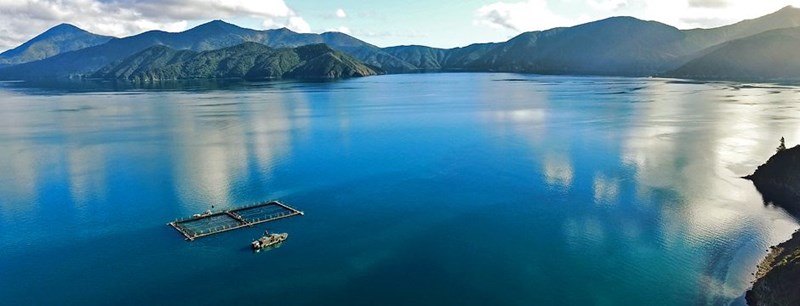
One step closer to RMA reform
The Environment Select Committee has returned its recommendations in relation to the Natural and Built Environments Bill (NBB) and the Spatial Planning Bill (SPB), the two pieces of legislation that will replace the Resource Management Act 1991 (the Bills). The Environment Select Committee has made a number of changes to the Bills, some more controversial than others, and many which tidy up aspects of the proposed legislation. One of the most significant is a change to the purpose of the Bills, which is now solely focused on upholding te Oranga o te Taiao. Previously the Bills contained dual purposes. This change represents a lessening of focus on use of the environment, in favour of environmental protection, and in all likelihood will increase challenges for developers and other users of resources. Welcome news for those resource users will be the Committee’s recommendation to introduce an objective to the NBB which emphasises the focus of the legislation on upfront planning through plan making processes, to reduce reliance on consenting. The Committee has also recommended amendments to the outcomes of the NBB, and included provisions which address the management of conflicts between outcomes. An example of this would be a development proposal that meets the outcome of ensuring infrastructure is provided in a timely and ongoing matter, but may have effects on indigenous biodiversity, meaning it could be in conflict with the outcome requiring protection of indigenous biodiversity. The conflict provisions state that not all outcomes need to be achieved in all places and at all times, and that achieving outcome compatibility should be favoured over achieving one outcome over another. Whether these provisions assist in practice to resolve conflicting interests when it comes to managing our resources is yet to be seen. Many called through the submissions process for the continued use of certain RMA terminology that has been the subject of significant litigation and is now well understood. Unfortunately, that call has not been answered in relation to the effects management hierarchy provisions in the NBB, which now require residual effects that are “more than trivial” (terminology not used in the RMA) to be offset and compensated for in the context of significant biodiversity areas, and specified cultural heritage areas. In terms of the SPB, the Committee has not recommended any major changes other than the change to its purpose which has been discussed above. Interestingly, the Committee has recommended the removal of the prohibition on considering impacts on scenic views (from private properties) from the SPB, therefore allowing consideration of impacts on scenic views from private properties as part of preparation of regional spatial strategies, but the prohibition has remained in the NBB meaning it won’t be a consideration in regional NBE plans or consenting processes. The process to enacting the Bills is likely to move quite quickly from here, without further public consultation and with limited further amendments. The second reading is occurring this week, followed by a Committee of the Whole House before a final reading prior to royal assent. The future of the Bills is unclear if there is a change in government later this year, with both National and Act refusing to the support the Bills, taking the position that they are worse than the current system in place under the RMA.






